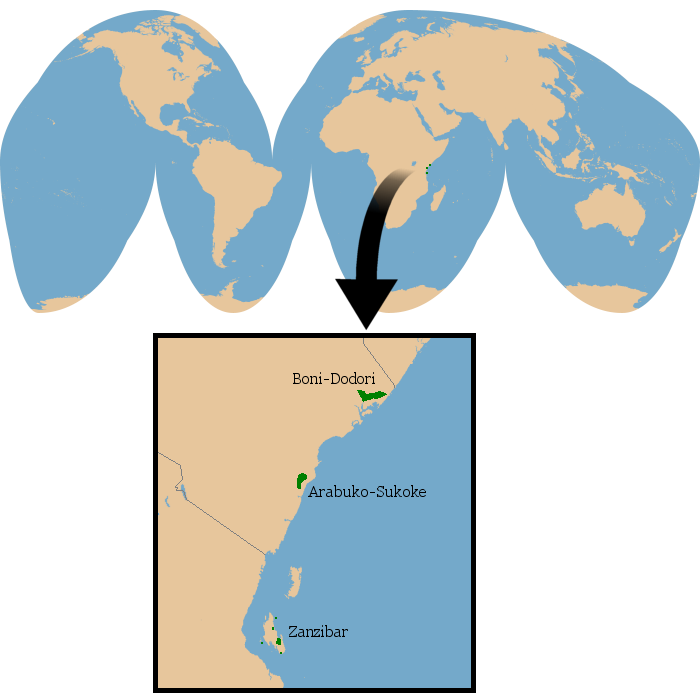Kingdom: |
Animalia Chordata Mammalia Artiodactyla Ruminantia Bovidae Cephalophinae Cephalophus |
Common name:
Scientific name:
Other names: |
Aders's duiker
Cephalophus adersi
Zanzibar duiker, Dwarf red duiker, Céphalophe de Aders, Adersducker, Paa nunga or Nunga, Mwalimu, Kungu marara, Harake, Guno |
Physical Characteristics
- Head and body length:
70 cm
- Shoulder height: 40 cm
- Tail length: 11 cm
- Adult weight: 7-12 kg
- Shoulder height: 40 cm
Aders's duiker is often described as one of the most beautiful antelopes. The body is covered with soft, silky hair. The back and rump are brownish-red in color, becoming increasingly gray on the neck. The undersides are bright white, and the line where the red and white meet on the sides is continued by a distinctive wide band of white that crosses the thighs and buttocks. The legs are reddish, turning black near the hooves; they are marked with irregular white spots, especially the front legs. The face has no distinct markings, but has a tuft of bright red hair on the forehead. Both sexes have short pointed horns; those of males grow 3-5 cm long, and those of females are only 1-3 cm in length.
- Similar species
- At a glance, Aders's duiker can be confused with the suni (Neotragus moschatus) or Harvey's duiker (Cephalophus harveyi) which are similar in size and color. However, neither possess the distinctive white band on the rump.
Reproduction and Development
Very little is known about the reproductive habits of this species. Pregnancies are known to occur between June and November, but it is not known whether Aders's duiker breeds year-round. A single young is typical.
Ecology and Behavior
Aders's duiker is primarily diurnal. Individuals begin feeding around dawn and continue until midday, when they stop to rest and ruminate. Foraging resumes mid-afternoon and continues until nightfall. Like many duikers, this species will follow birds or monkeys in order to feed on food items dropped from the trees. Aders's duiker can obtain sufficient moisture from its food and does not need to drink regularly. This species is very shy, alert, and has a keen sense of hearing.
- Family group:
Typically solitary.
- Diet: Leaves and fallen fruit.
- Main Predators: Leopard and python (where still present).
- Diet: Leaves and fallen fruit.
Habitat and Distribution

Conservation Status
- IUCN Red List:
Vulnerable (2016).
- CITES Listing: Not listed.
- Threats: Overhunting for meat and habitat loss.
- CITES Listing: Not listed.
Only 1,000 individuals are thought to survive in Zanzibar and Arabuko-Sukoke, a decline in numbers of over 75% in the past twenty years. However, the recently-discovered population in Boni-Dodori (Kenya) appears to be much larger, bringing the total population to approximately 20,000 animals.






